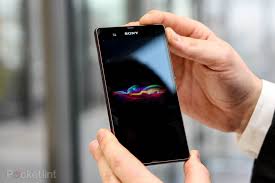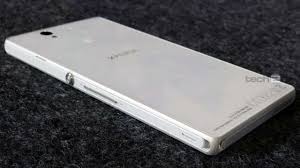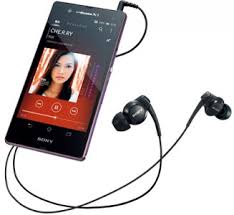Boy, it's good to be back.

For several months nothing interesting happened in the world of Android - but come 2013, and I can barely keep up.
Today I present my review of Sony Xperia Z, the latest flagship from, you guessed it, Sony. This phone has elicited a polarising opinion from the internet. Unfortunately, while most tech sites I visit have apparently come out of their contracts with Apple, now they seem fixated upon HTC and Samsung. In turn, Xperia Z is receiving very, very unfair coverage from the internet. I am here to set that straight.
See, I've had the Z for a few weeks now, and I know how it is to use every day. You won't find such a review elsewhere on the net. Try it.
So, at the start of 2013, what do you expect from a flagship Android phone? High quality build, stunning design, reasonable battery, card slot, high-falutin' camera, and top notch software, right? Well, Z delivers on every one of those counts.
HARDWARE

The phone is gorgeous. Made of gorilla glass (glorified plastic, make no mistake) front and back, it is one square slab which is also very thin. While the Net is busy singing praises of HTC One's curved back, aluminum construction, and fancy strips, it ignores several ergonomic nightmares going on with that device: a power button placed on top, and two capacitive keys below the display mapped to perform FIVE functions meant to be performed there : home, back, multitasking, menu and Google Now.
The Zs power button alone is a masterpiece. Big, round, it nestles squarely in the middle of the right side, it is placed so that when you hold the phone, your index finger ALWAYS strikes it. That means you can use the power switch without moving the phone an iota. Beat that, HTC.
Being waterproof (I know, I tested it), all the phone's orifices are covered with flaps. It's a mild irritant, but it pay off when the phone will have smudges and you will be able to place it under the tap without a care in the world. The phone also seems to be remarkably, remarkably resistant to scratches. Despite dropping it thrice on the floor, I have yet to see a single scratch or mark. Trawling the forums, I learnt that Sony have placed protective plastic sheets over both the front and back. That is in addition to the 'normal' protection.
A 5-inch screen device will always have some inconvenience to it. That is the case here, too - forget about being able to reach all corners of the screen with your thumb. However, the placement of the power button, and the solid (if a little painful) grip provided by the squared off sides mean that chances of the phone slipping away from your grip are minimal. The text, pictures and other stuff on it are gorgeous. The only slight problem is that it's not as bright as others in the competition, and its viewing angles are not ideal. Being a TFT LCD, it's said to be a bigger battery hog than super AMOLEDs and super LCDs used by Samsung and HTC.
That said, this 'problem' fades away while using the phone. You don't really miss the extra brightness of SLCDs or saturated colours of SAMOLEDs. All you are aware of is the pixel-perfect text, accentuated by the thin fonts used by Sony.
SOFTWARE

For me, this is the area where the Z shines most. While it launched with only Android 4.1, the best thing about it is that it sticks close to stock Android. The soft keys at the bottom are present and correct, and so are Google's swipes, slides and pinches that form the core of stock Android experience. Sony's skin is gorgeous, understated and elegant - at no point in time does it get in the way. The apps you fire up behave the exact same way as stock Android - no big fonts, ugly icons and swathes of black space on top (TouchWiz), or a wide strip at the bottom sporting the lone menu shortcut (Sense). The UI doesn't have to content with a lack of keys (HTC One), or an awkward placement of capacitive keys (both One and S3). It is Android, pure and simple.

Sony's media apps (Albums, Walkman, and Movies) are surprisingly capable. Not only are they better looking than stock Android counterparts, but they are functional in most surprising and pleasant ways. Downloading album art, or information about movies on your device, is a click away. Streaming to or from a network PC or PS3 is also just a click away. No need to install separate apps.
Watching movies on the Z is a revelation - I honestly enjoyed it more than our HDTV. The clarity is unsurpassed - this is where the 1080p resolution shines. The sound through the single speaker is pathetic though - the sound through headphones is again, outstanding.
The Z's camera should be great on paper - what with the Exmor R sensor and the much-touted 13 mp resolution. However, I will caution the readers: think of it as your routine cameraphone. It's nothing more than that. It also takes ages to launch - that's maybe the one biggest complaint I have against the Z. That said, I am very, very confident that both its speed and quality will improve drastically . The gallery app itself ("Album") is amazing in its simplicity and functionality. You can pinch in and out to alter the size of the thumbnails. All the online accounts - FB, Google +, Flickr - everything is seamlessly integrated. You almost forget they're there.
Rest of the apps work equally well. Contacts app behaves largely like stock Android one, with changed color pallete and added features. Most importantly, it supports swipes to switch between tabs.
This is the running philosophy behind Z's UI. Everything is there, provided for, in the most understated, unobtrusive manner. Take a look at these screenshots to know what I mean:

PERFORMANCE AND BATTERY
The phone runs on Qualcomm S4 Pro chipset, which, coupled with 2GB of RAM, means that it SHOULD fly. However, there are two problems: that 1080p screen and Sony's skin. Those two combine to ensure that the phone is not as smooth and fluid as Nexus 4. That said, it's no slouch, and I see nothing that cannot be fixed with some software optimization. Specifically, change the Sony launcher and you will instantly feel Nexus-4 levels of perceived performance.
Games play well - some of them stutter, but that is because devs simply haven't optimized them for double the resolution. With 1080p phones becoming increasingly common, it's a shame that hasn't happened.
The only blemish on the performance is of course, the camera app. It can take upto 5 seconds to fire up. That is unforgiveable under any circumstances and Sony should fix that ASAP.
Battery life is meagre. That is to be expected given the 2300 maAh unit and the power-hungry screen. However, Sony have included a Stamina Mode - and I am pleased to say that it works amazingly. Stamina mode allows you to specify which apps can keep operating even when the phone is in deep sleep. In real life, that means at least a doubling of battery life, which means that the phone can last through a whole day (at least). It is really, really commendable that Sony thought to enable this feature, previously only accessible through apps like Greenify for rooted phones.
CONCLUSION
So. 1080p screen, card slot, speedy chipset, Android 4.1, waterproofing, 13 mp camera, and top notch media software, glass construction. That's the stuff of dreams, and the Xperia Z delivers. There are shortcomings, but most of them can be mitigated by a software update, which is rumored to be coming during March (to Android 4.2). Being a Sony flagship, fast updates and hackability are a given.
If you are too obsessed with the screen brightness, better wait for the crippled HTC One or inelegant S4 - otherwise, there is absolutely no reason to consider any other phone.
Also, look out for my comparison between HTC One, Galaxy S4, and Xperia Z once the S4 is released.
For several months nothing interesting happened in the world of Android - but come 2013, and I can barely keep up.
Today I present my review of Sony Xperia Z, the latest flagship from, you guessed it, Sony. This phone has elicited a polarising opinion from the internet. Unfortunately, while most tech sites I visit have apparently come out of their contracts with Apple, now they seem fixated upon HTC and Samsung. In turn, Xperia Z is receiving very, very unfair coverage from the internet. I am here to set that straight.
See, I've had the Z for a few weeks now, and I know how it is to use every day. You won't find such a review elsewhere on the net. Try it.
So, at the start of 2013, what do you expect from a flagship Android phone? High quality build, stunning design, reasonable battery, card slot, high-falutin' camera, and top notch software, right? Well, Z delivers on every one of those counts.
HARDWARE
The phone is gorgeous. Made of gorilla glass (glorified plastic, make no mistake) front and back, it is one square slab which is also very thin. While the Net is busy singing praises of HTC One's curved back, aluminum construction, and fancy strips, it ignores several ergonomic nightmares going on with that device: a power button placed on top, and two capacitive keys below the display mapped to perform FIVE functions meant to be performed there : home, back, multitasking, menu and Google Now.
The Zs power button alone is a masterpiece. Big, round, it nestles squarely in the middle of the right side, it is placed so that when you hold the phone, your index finger ALWAYS strikes it. That means you can use the power switch without moving the phone an iota. Beat that, HTC.
Being waterproof (I know, I tested it), all the phone's orifices are covered with flaps. It's a mild irritant, but it pay off when the phone will have smudges and you will be able to place it under the tap without a care in the world. The phone also seems to be remarkably, remarkably resistant to scratches. Despite dropping it thrice on the floor, I have yet to see a single scratch or mark. Trawling the forums, I learnt that Sony have placed protective plastic sheets over both the front and back. That is in addition to the 'normal' protection.
A 5-inch screen device will always have some inconvenience to it. That is the case here, too - forget about being able to reach all corners of the screen with your thumb. However, the placement of the power button, and the solid (if a little painful) grip provided by the squared off sides mean that chances of the phone slipping away from your grip are minimal. The text, pictures and other stuff on it are gorgeous. The only slight problem is that it's not as bright as others in the competition, and its viewing angles are not ideal. Being a TFT LCD, it's said to be a bigger battery hog than super AMOLEDs and super LCDs used by Samsung and HTC.
That said, this 'problem' fades away while using the phone. You don't really miss the extra brightness of SLCDs or saturated colours of SAMOLEDs. All you are aware of is the pixel-perfect text, accentuated by the thin fonts used by Sony.
SOFTWARE
For me, this is the area where the Z shines most. While it launched with only Android 4.1, the best thing about it is that it sticks close to stock Android. The soft keys at the bottom are present and correct, and so are Google's swipes, slides and pinches that form the core of stock Android experience. Sony's skin is gorgeous, understated and elegant - at no point in time does it get in the way. The apps you fire up behave the exact same way as stock Android - no big fonts, ugly icons and swathes of black space on top (TouchWiz), or a wide strip at the bottom sporting the lone menu shortcut (Sense). The UI doesn't have to content with a lack of keys (HTC One), or an awkward placement of capacitive keys (both One and S3). It is Android, pure and simple.
Sony's media apps (Albums, Walkman, and Movies) are surprisingly capable. Not only are they better looking than stock Android counterparts, but they are functional in most surprising and pleasant ways. Downloading album art, or information about movies on your device, is a click away. Streaming to or from a network PC or PS3 is also just a click away. No need to install separate apps.
Watching movies on the Z is a revelation - I honestly enjoyed it more than our HDTV. The clarity is unsurpassed - this is where the 1080p resolution shines. The sound through the single speaker is pathetic though - the sound through headphones is again, outstanding.
The Z's camera should be great on paper - what with the Exmor R sensor and the much-touted 13 mp resolution. However, I will caution the readers: think of it as your routine cameraphone. It's nothing more than that. It also takes ages to launch - that's maybe the one biggest complaint I have against the Z. That said, I am very, very confident that both its speed and quality will improve drastically . The gallery app itself ("Album") is amazing in its simplicity and functionality. You can pinch in and out to alter the size of the thumbnails. All the online accounts - FB, Google +, Flickr - everything is seamlessly integrated. You almost forget they're there.
Rest of the apps work equally well. Contacts app behaves largely like stock Android one, with changed color pallete and added features. Most importantly, it supports swipes to switch between tabs.
This is the running philosophy behind Z's UI. Everything is there, provided for, in the most understated, unobtrusive manner. Take a look at these screenshots to know what I mean:
PERFORMANCE AND BATTERY
The phone runs on Qualcomm S4 Pro chipset, which, coupled with 2GB of RAM, means that it SHOULD fly. However, there are two problems: that 1080p screen and Sony's skin. Those two combine to ensure that the phone is not as smooth and fluid as Nexus 4. That said, it's no slouch, and I see nothing that cannot be fixed with some software optimization. Specifically, change the Sony launcher and you will instantly feel Nexus-4 levels of perceived performance.
Games play well - some of them stutter, but that is because devs simply haven't optimized them for double the resolution. With 1080p phones becoming increasingly common, it's a shame that hasn't happened.
The only blemish on the performance is of course, the camera app. It can take upto 5 seconds to fire up. That is unforgiveable under any circumstances and Sony should fix that ASAP.
Battery life is meagre. That is to be expected given the 2300 maAh unit and the power-hungry screen. However, Sony have included a Stamina Mode - and I am pleased to say that it works amazingly. Stamina mode allows you to specify which apps can keep operating even when the phone is in deep sleep. In real life, that means at least a doubling of battery life, which means that the phone can last through a whole day (at least). It is really, really commendable that Sony thought to enable this feature, previously only accessible through apps like Greenify for rooted phones.
CONCLUSION
So. 1080p screen, card slot, speedy chipset, Android 4.1, waterproofing, 13 mp camera, and top notch media software, glass construction. That's the stuff of dreams, and the Xperia Z delivers. There are shortcomings, but most of them can be mitigated by a software update, which is rumored to be coming during March (to Android 4.2). Being a Sony flagship, fast updates and hackability are a given.
If you are too obsessed with the screen brightness, better wait for the crippled HTC One or inelegant S4 - otherwise, there is absolutely no reason to consider any other phone.
Also, look out for my comparison between HTC One, Galaxy S4, and Xperia Z once the S4 is released.
